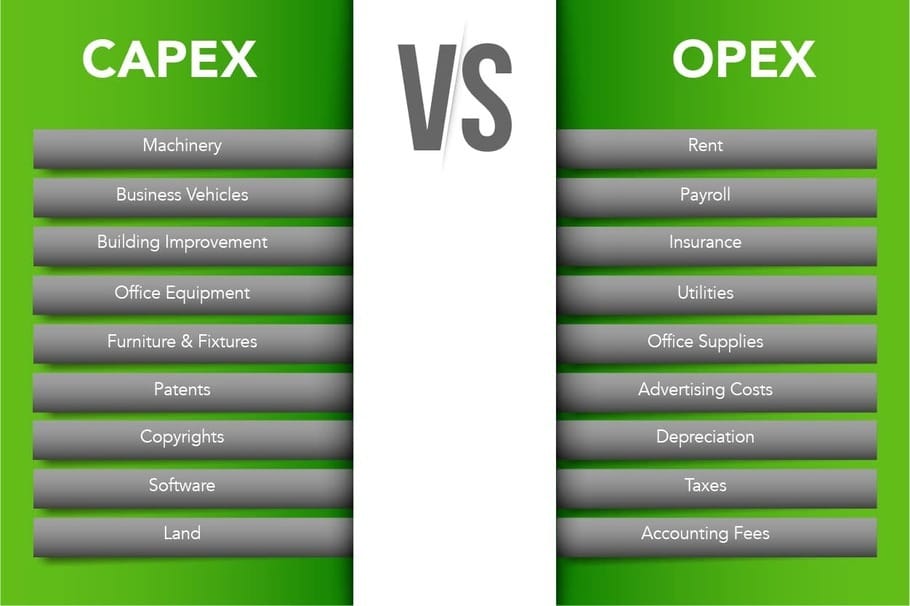In this article
In this article
What is Capital Expenditure (CAPEX)?
Capital Expenditure (CAPEX) is money invested by a company to purchase, maintain, or improve its physical assets such as buildings, machinery, and computer hardware and its intangible assets such patents, trademarks and computer software. CAPEX is often confused with OPEX (operating expenditure), but the two are distinct. We go into more detail about this distinction between OPEX and CAPEX in the preceding linked article.
CAPEX Digital Transformation and CAPEX investment decisions are critical business decisions as they are high-value, high-impact, and high-risk. When well implemented, they enabled sustenance and growth. Poor decisions or implementations can result in material financial loss, reputational damage and loss of market share.

CAPEX Digital Transformation
CAPEX digital transformation can occur in three phases, often in the transition from paper to an automated workflow business process.
Firstly, a company will look at CAPEX digital transformation, this is simply moving from paper forms or manual process to automated solutions. Companies recognize the speed and accuracy that is delivered through electronically recorded information that computers can process easily. In summary it facilitates data processing.
Secondly, there is Digitalization. This involves data-driven applications, data integration, analytics, and metrics with the purpose of making processes more automated. Instead of just data processing, digitalization is about making sense of the data (adding value).
Finally, there is Digital Transformation. This is when a company uses digital technology to accelerate business strategy. A project with a digital transformation goal will create change across multiple departments. CAPEX Digital Transformation will empower people, optimize processes, and automate systems in the organization to improve business performance.
Why are Companies investing in CAPEX Digital Transformation?
Companies are embracing CAPEX digital transformation due to its complexity and need for better decision making, compliance, speed and to be future-ready. Covid-19 accelerated this shift as companies looked for a competitive edge in an uncertain business environment.
92% of business leaders agree that to survive and flourish; companies must enable digital channels and process automation in the workplace. – Harris poll.
CAPEX digital transformation is one critical area that companies are looking to digitally transform to be able to accommodate cross functional needs and ensure that capital investments (that are often high value, long-lasting and risky) are able to be ranked, scored and funded across multiple department initiatives. For many businesses, the need for digital transformation has become a priority. Here are 5 key benefits that can be gained from CAPEX digital transformation:
- Portfolio Management – Most key CAPEX related decisions are not simple yes/no choices. Rather they comprise of a ranking and prioritization based on urgency, impact, and risk constrained by human and financial resource capacity. Through digital transformation companies can consistently and effectively compare classifications and metrics to be applied to all requests across multiple departments.
- Completeness of CAPEX requests – Each CAPEX request should be controlled by a dynamic digital form, that starts simply but then automatically expands to capture mandatory data based on the inherent value and risk of each request. Automatically assigning tracking numbers to all requests provides a complete picture when it comes time to review and analyze the CAPEX project history.
- Strategic Alignment – CAPEX forms and processes must integrate corporate strategy. As capital investments are a company’s most valuable and long-lasting decisions, it is imperative that they clearly align to strategic imperatives to assist with the prioritization of scarce capital and resources.
- Benefits Realization – Digitally transforming CAPEX solutions provide a structured process of collecting the anticipated incremental revenue or cost savings, and factor those into future forecasts and comparisons. The actual results can be quantifiably analyzed and evaluated with respect to the expected outcomes, and mitigating actions taken if required.
- Learning – The best CAPEX digital transformation systems have built-in improvement processes. With CAPEX processes, the Post Investment Review is the opportunity to learn and improve the assumptions, approval processes, classifications, risk assessment or any other aspect of the process that resulted in a sub-optimal outcome. This process should be automatically triggered and systematically managed to ensure the organization gains from this vital learning.
More CAPEX digital transformation benefits can be found by reading: “18 Indications your capital investment management system needs upgrading”
A Closer Look at CAPEX in SAP Investment Management
CAPEX digital transformation aims to maintain present operation levels and facilitate future business growth. CAPEX project decisions are significant as:
- They are mission critical – failure to address a critical risk or growth opportunity may have existential implications for an organization.
- They are capital intensive – they are often large purchases involving the need for long-term funding.
- They are rigid – many capital investments are rigid and not easily reversed.
In our article “Why are you NOT making use of SAP Investment Management?” we discuss how this standard SAP functionality is the best platform for SAP customers, but it has limitations such as:
- Option Assessments – limited functionality provided to effectively score and rank appropriation request variants.
- Workflow and Approvals – this requires specialist skills to implement, is expensive to support, and provides a poor executive end-user experience.
- Monthly planning and forecasting – Probably the biggest functional gap in SAP Investment Management is the inability to provide a monthly forecast of budgeted items in either your Investment Program Positions or Appropriation Requests.
- Usability – standard SAP interfaces do not provide the tailored data fields, justification texts and classifications an organization requires for effective decision making which can result in delays & inefficiencies.
- Industry Requirements: Capital Expenditure requirements vary considerably by industry making evaluation and prioritization of CAPEX projects unique and important. SAP IM provides some common analysis dimensions; however, most organizations have additional classifications that are not built into standard SAP IM.
- Unsupported Investment Management Processes – some common investment management processes such as: Asset Transfers, Revaluations and Disposals, Project Closure, Post Investment Review and Benefits Realization Analysis are not supported in SAP IM.
What are the Barriers to CAPEX implementations?
Implementing CapEx digital transformation solutions such as IQX CAPEX appears the obvious solution for long-term success. However, many companies are yet to embrace automation as we discuss in-depth in the blog post “6 reasons why people haven’t automated their CAPEX process in SAP”:
- Procrastination
- Fear
- Excel
- Executives
- Planning
- Persuasion
A Harris poll survey established that 86% of businesses often face one or more barriers toward digital transformation with the complexity of process automation being the top challenge and a limited budget being a major constraint.
These challenges were further highlighted in a survey done by Jabil of 300 technology and business stakeholders around the world. The survey established that the main barriers to digital transformation include employee pushback, limited budget, organization structure, and lack of expertise to lead digitalization efforts.
What SAP run companies should consider if Digitally Transforming CAPEX
By embracing digital transformation in the area of CAPEX companies save in the long-term as it leads to a reduction in cost, risk, and time. For example, in a McKinsey study, smarter capital expenditure management can save large industrial companies up to 25% on every project.
If you are running SAP here are a few considerations:
- A single source of truth – Organizations who adopt third-party best-of-breed solutions to complement their digital core, often incur long-term consequential costs. Utilizing SAP Fiori will allow you to leverage your existing SAP investment and environment.
- Overcome SAP IM limitations – Most of the historical reasons for not adopting SAP Investment Management can be overcome by developing custom Fiori apps that can comprehensively support the user experience, process and integration requirements.
- Map and document processes that need streamlining – Technologies generally do not turn bad processes into good ones. They accelerate processes. To apply any process automation or process management tool, first map out and understand the process.
- Integration – If a process requires accurate, real-time data from the SAP ERP system or needs to report results back into that system, ensure deep SAP integration. No one wants to bounce back and forth between different systems or to manually copy information from one system into another.
The Acceleration of CAPEX Digital Transformation
There is overwhelming evidence that CAPEX digital transformation delivers tangible benefits and a competitive edge to companies. According to McKinsey & Co., achieving world-class capex management can drive a 15 to 25 percent reduction in overall capital spend coupled with an improvement of 2 to 4 percent in ROIC. Some firms have even achieved a staggering 50 percent reduction in year-on-year capex portfolio spending.
Capital expenditure solutions are a large cause for debate and their complexity makes them difficult to choose from. However, solutions for CAPEX have vastly improved and what was once a bespoke, custom developed solution only affordable to large companies is now available through SAP Fiori utilizing your existing SAP environment and team. Chat with us about investing in CAPEX digital transformation today.
Related Posts
If you enjoyed reading this, then please explore our other articles below:




